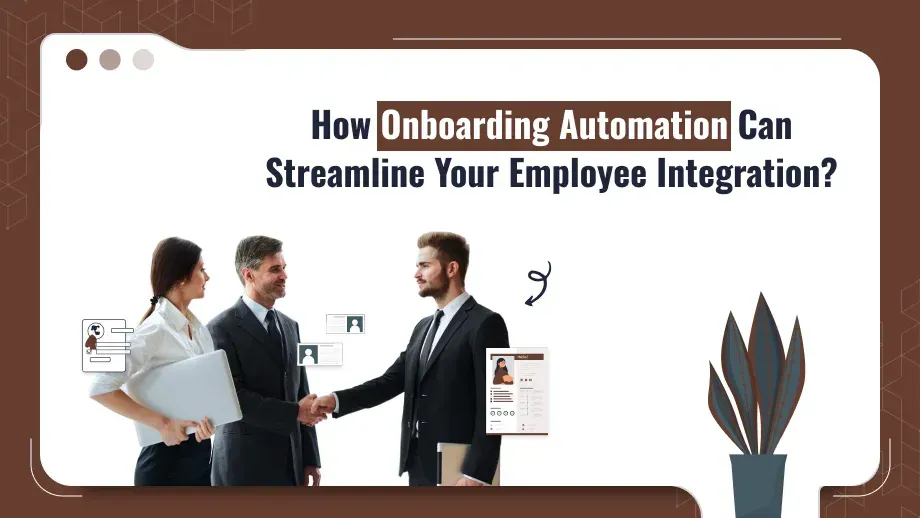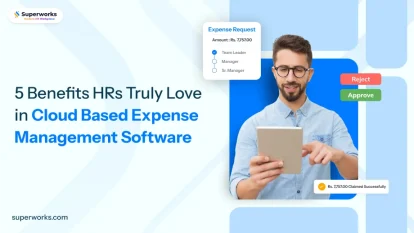
In today’s fast-paced business world, companies are looking for new ways to make their processes even more streamlined. One of the areas that has significantly evolved through automation is employee onboarding software. Onboarding automation has the power to revolutionize how companies integrate new hires, thus making the process faster, more efficient, and more engaging.
Through automation, by streamlining tasks such as document submission, training schedules, and IT setup, employers can ensure that new employees run from day one.
In the post, we will address how automated onboarding processes work, the benefits they produce, and why you might need to consider automating your onboarding process flow. We’ll also highlight the selection of the appropriate tools for you, common mistakes to be avoided, and tips that may help the implementation procedure to be more successful and less painful.
Advantages of Automatic Onboarding
Automating the onboarding process is not only useful for saving time but also an enormous benefit. Here are the chief advantages of employee onboarding:
Time and Resource Savings
Time-consuming onboarding tasks that include paperwork, setting up of emails, and employee accounts, can all be automated, allowing more time for HR teams to attend to the human part of onboarding, such as guiding new hires or showing them around. By streamlining your onboarding workflow, you’ll ensure that all new hires have all they need from the tools to the resources without the burden of an administrative delay.
Consistency and Compliance
Consistency is the word for onboarding. With onboarding automation, you can ensure that every new hire receives the same kind of welcome and training experience. Automation of the onboarding process flow will ensure nothing gets missed and will keep your employees in line with company policies and regulatory compliance.
Improved Employee Experience
An automated onboarding process is not only efficient but also helpful to the new hire. You can therefore make the experience more individualized for employees while saving time. Automated systems can send personalized welcome messages, provide access to company resources, and schedule training sessions. This helps new employees feel more connected to the company from day one and ensures that they are prepared and engaged, which can ultimately improve retention.
Scalability and Flexibility
With growth comes your company, and so does the scale with onboarding automation. Hire one employee, or 100- onboarding automation provides the most streamlined process for every new hire in the book. It’s flexible too, so you can shape this process to the uniqueness of your company culture. For example, partner onboarding can be automated to ensure these processes align with your requirements.
How Onboarding Automation Works
So, how does onboarding automation work in practice? The process generally involves automating repetitive administrative tasks while maintaining flexibility to customize certain aspects of the onboarding journey.
Four C’s of Onboarding
When you’re going about automating onboarding, there are four different steps that are involved known as the “Four C’s”.
- Compliance: It includes areas such as tax forms, confidentiality agreements, and ensuring the legal Onboarding documents are available to the employees.
- Clarification: In this stage, new hires gain clarity about their job roles, expectations, and goals. Automated training modules can be provided to help employees get up to speed.
- Culture: Automated employee onboarding tools can help introduce new hires to the company culture. Automation can include sending out welcome videos, setting up meetings with team members, and providing access to an employee handbook.
- Connection: The connection phase ensures that new hires feel welcomed and integrated into the team. With automation, you can schedule team meetings, provide networking opportunities, and set up introductions with key stakeholders in the company.
By automating each stage, companies ensure that employees receive a complete and efficient onboarding experience that flows smoothly from one stage to the next.
The Role of Technology in Onboarding Automation
The tools you choose for automation play a major role in the overall experience. HR software India can automate documentation, benefits enrollment, and even performance tracking. These tools provide the Human Resources teams with real-time visibility into the status of every employee’s onboarding journey.
For instance, onboarding automation tools can automate document collection, training, and performance tracking. These platforms can be integrated into your company’s existing systems to ensure smooth and efficient workflows.
Onboarding automation can boost employee satisfaction by 2.6x!
Enhance your onboarding process with seamless automation.
Choosing the Right Tools for Onboarding Automation
It can be quite confusing to decide which tool to use, considering so many options. To narrow it down, you must identify the right one for your company when selecting a self-service automated onboarding platform.
Ease of Use
Choose tools that are easy to navigate for both HR teams and new employees. Platforms with user-friendly interfaces ensure that employees can quickly get set up without needing constant help from HR staff.
Customization
Find tools that allow you to customize the onboarding experience to be aligned with the culture and needs of your company. A customized onboarding workflow makes the experience more engaging and ensures new hires feel welcome.
Integration Capabilities
Your onboarding automation system needs to integrate well into your existing HR systems. Be it payroll management through an HRMS payroll software in India or some other way, these integrations ensure that information flows smoothly across your systems.
Scalability
Ensure that the platform grows with your business. Whether a small startup or a large enterprise, the tool needs to be scaled as you add more employees.
Common Blunders in Avoiding Onboarding Automation
Even though onboarding automation brings along many benefits, there are some traps that one should beware of:
Over-Automating
On the one hand, automation does save time but at times, it has to be overdone, and all this stripping of personal interaction makes it very hard for new hire individuals to connect with others. A balance between human touch and automation is highly important.
Neglecting Company Culture
Automating tasks like document signing is helpful, but automated Onboarding In HRM shouldn’t replace efforts to introduce new employees to your company’s culture. For example, offering automated introductions to key team members can help integrate employees into the organization.
Not Tailoring Automation to the Role
It is dependent on the different types of jobs the new employees will have and may require varying types of onboarding. The digital onboarding solution should, therefore, support the ability to personalize based on whether it’s for a new sales manager or software engineer.
Ignoring Feedback
Be sure to collect feedback from employees about the automated onboarding process. This will allow you to improve the process to better meet their needs continuously.
Best Practices for Implementing Onboarding Automation
If you’re ready to implement employee onboarding automation, here are some best practices:
Start Small
Begin by automating simple tasks, such as document collection or sending welcome emails. Once you’ve mastered these, expand automation to other aspects of the onboarding process.
Use an Onboarding Checklist
Make a checklist of all the tasks that have to be done during onboarding. This way, you can track your progress and ensure everything is on schedule.
Incorporate Interactive Elements
Even though you’re automating, try to add interactive elements such as training videos or Q&A sessions to keep the new employees engaged and involved in the onboarding process.
Monitor and Measure Success
Once you have set up onboarding, track KPIs such as time to productivity, retention of employees, and feedback from new hires that will allow you to continually refine and improve your Induction and Onboarding process over time.
Conclusion
Onboarding automation is the most crucial modern tool that helps companies simplify their processes while providing a much better experience to new hires. Automating activities like paperwork, training, and IT setups can be helpful in saving time, assuring compliance, and most of all, creating employee engagement on day one.
Whether you are a professional seeking to improve HR onboarding or an alternative- such as merchant onboarding, you seek to automate, it allows giving you a uniform, scalable experience personalized. When implemented accurately, employee onboarding automation is capable of driving a great deal of retention rate, productivity, and ultimately overall job satisfaction, catapulting the business to become long-term successful.





